N° 8
September 2020
—
TTS Italia is the Italian ITS Association founded with the aim to promote the development and deployment of Intelligent Transport Systems (ITS) in Italy. |
|
|
|
|
|
|
Panero: "Italy does not miss the opportunity of the Recovery Fund. Concrete proposals for reaching mobility 2.0 "

If not now, then when? The question of Rossella Panero, President of TTS Italia, is not rhetoric, but sounds like a call to action: to finance the digital leap of Italian mobility with the Recovery Fund. Among the 556 projects presented by the Government, now to the attention of Parliament, there are already various growth opportunities for smart mobility "also the result of the work of our Association which in the coming weeks will continue to work to refine the proposals", recalls the President in this interview and describes the 7 essential actions to land in the new era of mobility indicated by TTS Italia: data sharing, transport and infrastructure safety, implementation of electric recharges, relaunch of the National Logistics Platform, smart road and a national plan for the development of self-driving vehicles. Finally, it is important to inform about funding opportunities.
The list of over 500 Italian projects presented under the Recovery Fund been recently published. What do you think?
I would say that it is a “zero draft”, a document in the process of consolidation that still requires work of integration and harmonization. The package of projects is now under the attention of the Prime Minister and this allows TTS Italia to continue working with our institutional representatives to refine the points that interest us. Having said this, it should be emphasized that already at this stage we can see some interesting signs for our sector. The concept of smart mobility stands out as a transversal topic and emerges in projects presented by various institutions. We have an indication from the Ministry of Economic Development which proposes innovative solutions for urban transport, then we have a project of the Ministry of Innovation where we talk about innovative mobility and artificial intelligence, finally the concept also appears in the proposal of the Ministry of Infrastructure and Transport where the extension of smart roads is described. I would say that this is certainly a result obtained also thanks to the action that TTS Italia has carried out in recent years and the work that the Association has done in recent months: it is an answer in line with our philosophy both in terms of content and in the application. We have always argued that smart mobility can only be achieved if it is understood as a common goal for all the interlocutors of the ecosystem. Furthermore, giving impetus to the mobility of people and goods corresponds exactly to the criteria imposed by the EU for projects that can be financed, namely digitization, environmental sustainability and social sustainability. I would say that smart mobility embodies all three of these goals.
Do you think that projects presented in particular in the field of transport and mobility make it possible to fully exploit the potential of technologies such as ITS?
Honestly, it is difficult to understand the scope of the projects from the few lines of description that appear on the document. This is the goal we must have for the next few weeks: to understand if the technological contribution in the field of mobility is adequate. On the other hand, it would be a shame not to take advantage of this opportunity to make the leap towards more digital mobility and thus make full use of the potential of ITS solutions. In short, I feel like saying: if not now, when? It is also necessary to be careful not to transform into a penalized factor what is in reality a great advantage of ITS: the investments required for lightweight solutions are limited and therefore perhaps not very attractive when the amounts involved are so high. When you have figures of this caliber at your disposal, you think of creating large, very expensive works that will give benefits after a long time, while technological projects, perhaps less expensive, but more immediate in the activation and therefore in the achievement of the objective, could be sidelined and relegated to other sources of funding.
What is and could be the role of smart mobility in the Recovery Fund?
As TTS Italia we have presented in recent weeks to the Prime Minister, the Ministry of Infrastructures and Transport (MIT) and the Ministry of Innovation a document with 7 proposals that we believe are absolutely necessary and urgent to contribute to the digitization and innovation process in the mobility system, understood as a whole: people and goods, in urban, extra-urban areas and in the various modes of transport. At the first point we put the sharing of data by all operators towards the NAP (National Access Point) which in Italy is represented by the CCISS. This is a measure already imposed by the EU through a delegated regulation which Italy has not implemented yet. Furthermore, the availability and sharing of data is essential for the implementation of Mobility as a Service, a fundamental pillar for intelligent and sustainable mobility from every point of view. In second place we have put some operational proposals to address the post-Covid 19 phase in particular to make urban public transport safer. The third proposal concerns the relaunch of the National Logistics Platform, in fourth place the implementation of smart roads, which has been included in the list of projects, with the extension of the possibilities offered by the MIT decree to the entire national network in order to guarantee continuity of V2X services between suburban and urban / metropolitan areas. This is followed by the request to implement the monitoring system of existing infrastructures with technologies capable of planning careful preventive maintenance. It is also necessary to start the full implementation of the electric vehicle charging network to support the spread of this form of green mobility and, finally, we have asked for a national plan for autonomous vehicles. As happens in the United Kingdom, Italy should also follow this path through the creation of Living Labs for experimenting autonomous driving, in order to support and then replicate the best practices of cities currently engaged in experimenting with autonomous driving applications such as, for example, Turin and Modena.
What actions will TTS Italia take to support local authorities and companies so that they can move better in the field of financing?
In the coming months, in addition to the orientation, information and study of the market that our Association regularly carries out, we will also carry out a new strategy aimed at facilitating the use of financing opportunities for the benefit of operators and local authorities who are often the first subjects to have to start the financing processes. Actually, we have realized, during our experience in the field, that often companies are not put in the conditions to access funding for purely managerial reasons or for lack of correct information and, consequently, too many fundings are not fully used.
TTS Italia will therefore shortly launch a working group led by Roma Servizi per la Mobilità, open to all TTS Italia members and local authorities adhering to our Platform, with the specific task of initiating systematic and timely monitoring of all forms and financing methods, including the Recovery Fund. We would like to encourage a more accurate knowledge of the opportunities and rules of the game among all stakeholders so that missed opportunities are increasingly rare. |
|
|
|
|
|
|
Selea: Discovering intelligent cameras for ITS systems
SELEA is specialized in the manufacture of number plate reading solutions, both for vehicle access control and for territorial security and traffic control. All of our products are developed and manufactured entirely (100%) in Italy.
For more informations
https://en.selea.com
—
PRODUCT IN THE SPOTLIGHT
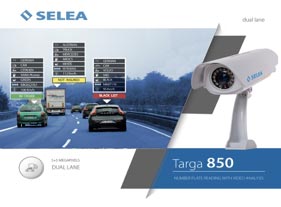
The ceaseless evolution of information technologies, especially in the field of AI, not only promotes the constant development of ITS systems (based on the interaction between IT and telecommunications), but also becomes a functional solution for mobility and public safety.
The development of new microprocessors (GPU), becoming increasingly powerful and cheaper, together with convolutional neural networks (AI), now blend to give body to more and more performing and functional ITS tools.
Thanks to these technologies SELEA has developed an intelligent camera - TARGA 850 - that can perform multiple traffic analysis and for this reason it is able to provide interested parties with information useful for integrated urban security (stolen cars, dummies, accomplices, etc...), road safety (incident detection) and mobility (traffic analysis).
Before talking about product features, it is necessary to dwell on a really important aspect: the training of video analysis networks. One thing is to declare that a certain instrument carries out a determined video analysis, another is to understand how well it performs this operation.
When choosing an intelligent camera, especially those that promise to perform multiple analysis, it is essential to ensure that the camera is able to carry out all analysis simultaneously and accurately.
It may not be uncommon to find out that, although it is declared an high number of different analysis, the camera cannot support them simultaneously, but only a few of them at a time.
And here the marriage between hardware (GPU) and software (AI) comes into play.
In order to get good results, in addition to using a powerful GPU, you need to have an optimized, and above all a well-trained, neural network of videoanalysis (AI). The training of a network is obtained by feeding numerous data collections (called in jargon dataset).
The more a network is trained to recognize a certain object, the more precise its processing becomes and the more correct the data it provides will be. To train a neural network, a large number of samples from the same subject must be administered, teaching it what that sample represents. Training is mostly a manual operation that requires a huge amount of man-hours.
The more the dataset is full of significant examples of the subject (in different angles, colors and context conditions), the better the training will be.
 If you look at the pictures on the side, you will understand how easy it is that a poorly trained network cannot accurately distinguish a Chihuahua from a Muffin. In order for the network to be able to distinguish the two subjects with a reduced margin of error, it is necessary to instruct it by giving a dataset made up of millions and millions of different images of the same subject. If you look at the pictures on the side, you will understand how easy it is that a poorly trained network cannot accurately distinguish a Chihuahua from a Muffin. In order for the network to be able to distinguish the two subjects with a reduced margin of error, it is necessary to instruct it by giving a dataset made up of millions and millions of different images of the same subject.
This is a camera with intelligent multi-video analysis capable of simultaneously detecting the following features on a dual lane:
• License plates reading,
• dangerous goods plates reading (ADR tables),
• speed estimation
• vehicle classification,
• nationality,
• direction of travel (transit ban),
• color,
• make and model.
It carries out this analysis in real time and simultaneously
Just to make a comparison, in reference to the training, the TARGA 850 camera recognizes: up to 16 color classes; up to 10 vehicle classes; over 400 brands of the most important vehicle manufacturers in the world and over 9000 vehicle models including heavy vehicles, vans and cars. If we only consider the training of the neural network that underlies make and model recognition, it has been used a dataset of over 100 million vehicles.
A monumental work, but necessary if you want cameras that bring impeccable results to video surveillance and the Intelligent Transport System.
The truth, as well as the quality, is not written, it is demonstrated.
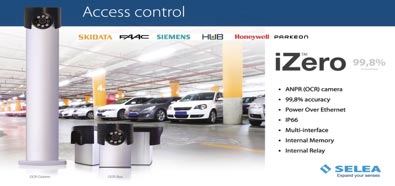
In the field of access control, Selea has developed a column and a box (both containing an ANPR – OCR camera) for license plate reading , characterized by a refined design with an unequalled reading precision of the characters that make it suitable for applications like: automatic parkings, hotels, resorts, residential complexes, campsites, shopping centers, airports, trade fairs, corporate entrances and municipal parking lots.
—
THREE QUESTIONS TO
Luca De Vivo – SELEA Export & Sales Department
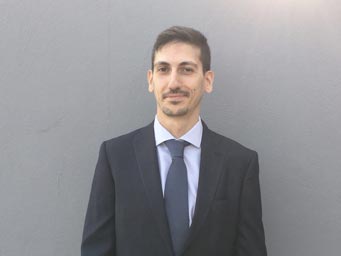 Which technologies or strategies do you see useful in the post-Covid era? Which technologies or strategies do you see useful in the post-Covid era?
There are technologies and strategies that have proved useful in the pre- and post-covid era, such as the license plate reading and multi-video analysis camera TARGA 850. The lockdown has had the effect of increasing the economic crisis, unemployment and social tensions. As a result, we are seeing an increase in crime. Intelligent cameras capable of providing metadata, such as TARGA 850, have shown remarkable results in crime prevention, and resolution as well. Furthermore, the tracking, through the reading of the number plates of vehicles registered to citizens who should not go around (because they are subject to quarantine), will prevent the further expansion of pandemic hotbeds.
Are your technologies useful also in the era of Smart Cities?
Using technologies like our TARGA 850, you can also establish how many vehicles pass recursively by the entrances and the exits of an area: usually, these are people who go to work. This analysis allows the public administrations to look for more suitable solutions to reduce pollution and traffic, perhaps by intensifying the public transport system. Furthermore, this camera model can identify vehicles passing by occasionally, or others coming from different locations for tourism or business. The camera is also able to classify vehicles by discriminating between cars and heavy vehicles (which are the ones that pollute the most), which helps in taking measures to make local traffic more fluid. It is possible to analyze data such as nationality, with an eye to facilitating tourism development, always looking for simple solutions for parking; the camera can also recognize the Euro class, to determine the pollution rate, as well as calculate the average speed of the vehicles flowing along a specific route, information that expedites the reporting of traffic jams in real time or the search for alternative solutions.
What is in store for the future?
Let's start with our strengths. First of all, we fully develop (100%) both the Hardware devices and the Software solutions (including the integrated algorithms). Therefore we provide a 360-Degree solution, including technical support, of which we are fully responsible. I believe that the lasting success of our company is closely linked to the know-how of our staff, and this is acknowledged not through my personal opinion, but measuring the highly appreciated results provided by our products, which have always proved to be reliable and carrying out excellent performances. Our core business is to develop intelligent embedded systems.
For the future, we are developing useful devices for the security and access control sector. We are a purely engineering, open and flexible, company that is collaborating for the development of new solutions with high-profile partners, both in Italy and abroad. Our products are basically IOT devices, or better, as we define them, "IaOT" (Intelligent analysis Of Things) devices for the recognition of the characteristics of objects/subjects and their behavior, that will become productive devices in the era of 5G and Smart Cities.
|
|
|
|
|
|
|
Hyperpath: safe and sustainable city routes for everyone

Mobility is returning to full speed after the lockdown and the summer break, and technological solutions can help public administrations to maintain social distance and encourage green mobility that keeps emissions at a low level. One of the PTV Group solutions to promote safe and sustainable traffic for all citizens is the Hyperpath route planner.
Hyperpath is a dynamic routing engine for infomobility platforms. The tool calculates the best route, travel time, alternative routes, avoids traffic and calculates specific information of different means of transport such as car, truck, bicycle, taxi, emergency vehicles and others. All of this, taking into account the current, expected and usual road traffic conditions, interventions on the roads and other impacting events, the position of public transport and last minute changes to the service. Hyperpath can be integrated quickly and easily into any road traffic management dashboard, app or infomobility portal. It is the ideal solution for cities that want to facilitate the movement of their users, while satisfying the needs of the same and the Administration.
For example, one of the challenges of the post-lockdown phase is to respect social distance and safety standards, while maintaining an efficient transport system with adequate capacity for the needs of the citizens. Hyperpath provides travel information that takes into account elements such as crowding on board the vehicles, queues at the stop or delays and changes in the routes. Based on these data, Hyperpath proposes optimal route solutions, while avoiding routes that include too crowded buses or stops.
Hyperpath can also help if you want to encourage alternative and green mobility. In fact, the route finder allows you to elaborate mixed routes, combining multiple means of transport. This facilitates users interested in using bike sharing combined with walking or public transport. A practical case: the VOR route seeker A-nach-B (“from A to B”), in Austria, uses Hyperpath and provides bicycle routes, including the possibility to board it on public transport. Furthermore, Hyperpath provides an estimate of the environmental impact of the different routes depending on the means of transport used. This way the user can evaluate the sustainability of its path alternatives.
For more information on cases of use and operation of the Hyperpath route finder, we invite you to attend our free webinar (in Italian) which will take place on September 30th from 3.00 pm to 4.00 pm (link).
|
Tattile contributes smart camera technology to Weight in Motion System on new Genova Bridge

The collapse of the Morandi Bridge in Genova as a major Italian strategic transport line on 14 August 2018 which caused 43 victims will remain in the memory of the Italian people. As such, it can be taken as a symbol for the strength of the Italian nation that in less than two years after the disaster the newly constructed viaduct was inaugurated in Genova on 3 August 2020. Despite the extremely ambitious construction period one lesson learned from the catastrophe was to massively invest in the static surveillance of the new infrastructure. The old viaduct was already equipped with basic motion sensors under the road deck which detected movement of the deck. However, these sensors were not able to trace back the causes of the movements.
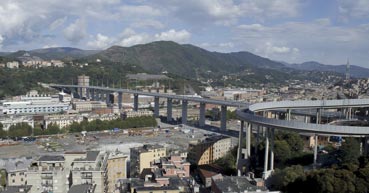
As a consequence, the constructors of the newly erected San Giorgio Bridge in Genova decided to install a much more comprehensive system of structural monitoring which provides a constant and complete picture on what happens on and with the infrastructure. The entire structural monitoring system now includes not only sensors under the platform to detect movements. In addition, four Tattile Vega Basic cameras are mounted above the bridge to monitor the traffic flow and detect license plates.
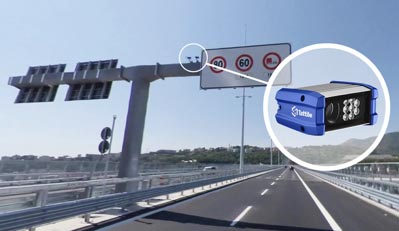
These Tattile cameras are connected to a Weight in Motion System designed by iWIM which detects and records the weight of the axles and the gross weight of the vehicles as they pass over a sensor integrated in durable steel plates installed on the road surface of the viaduct. All the data generated from the sensors and cameras is sent to a central server enabling a clear picture of what happens on the bridge at any time. By integrating Weigh in Motion technology with the combination of Tattile Vega Basic cameras on the new San Giorgio it is now possible to correlate structural deformations to the weight that weighs on the infrastructure; and to trace the weight load caused by individual vehicles crossing it. As such the combination of sensors and smart cameras acts as an early warning system and facilitates management and planning of interventions in the stability of the infrastructure as well as preserving investments such as repaving the asphalt.
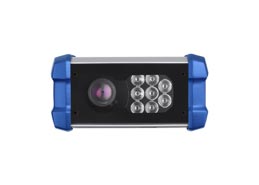
For further information:
www.tattile.com
|
Sherlock, Viasat's bike anti-theft device is again available in the United States

After various procedures and laboratory tests, certification from the Federal Communications Commission (FCC) for Sherlock by Viasat was obtained. It is a key passport and indicator that promotes the free circulation of the product and allows customers to be sure of good quality. It is now available throughout the US market, as well as in Europe.
Sherlock offers an anti-theft solution that helps cyclists to combat the phenomenon of bicycle theft, making it easier to find stolen vehicles. This solution consists of the combination of an electronic device and a service usable through an App on a smartphone. The strong point is the flexible and “invisible” design: once installed it is completely camouflaged and undetectable from the outside. Moreover, thanks to the association between user, device and bicycle, the latter can be uniquely identified and the cyclist can demonstrate and claim ownership at any time.
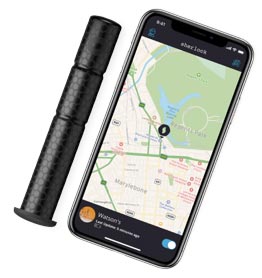 It fits perfectly to any type of bicycle, both those with straight and curved handlebars. Sherlock is connected to an app (Sherlock mobile app, available for IOS and Android) that allows you to know at any time where the bike is, making it easier to find it in case of theft. It fits perfectly to any type of bicycle, both those with straight and curved handlebars. Sherlock is connected to an app (Sherlock mobile app, available for IOS and Android) that allows you to know at any time where the bike is, making it easier to find it in case of theft.
Viasat has always been committed to sustainable and green mobility. The recent increase in bicycle use (according to ANCMA data, National Cycle, Motorcycle and Accessories Association, will record a + 25% in sales), during the global Coronavirus epidemic, has reinforced these attentions.
Many people, in order to avoid the crowded public transports, have chosen the bicycle as an individual way of travel and as a personal measure of prevention from contagion. Incentive effect? Perhaps, but not only. In fact, the topic is not only about the "Coronavirus" emergency, but above all the consideration of how the bicycle is increasingly becoming the ideal alternative form of mobility for those who choose agile and environmentally responsible mobility.
For further information:
www.sherlock.bike
|
|
|
|
|
|
|
Enrique Enrich is the new Italscania CEO
Enrique Enrich, starting from 1 December 2020, will assume the position of CEO of Italscania, TTS Italia ordinary member. After a period of coaching, he will take over from Franco Fenoglio, who has been in office since 2012.
Enrich began his career at Scania over 20 years ago, after earning a bachelor's degree in economics and a master's in statistics from the University of Sao Paulo, Brazil. At Scania he has held various management roles in numerous countries, notably Sweden, Brazil, Colombia, Uruguay, Argentina and Mexico. He has spent the last 5 years in Mexico where he held the position of Chief Executive Officer of Scania Mexico. Enrich is 46, married and has two daughters.
“I am enthusiastic about this new opportunity and the prospect of working in a market of primary importance like the Italian one. I will put all my efforts into the field to continue on the path of success that has characterized Scania in Italy”, highlighted Enrique Enrich. "The transport sector is experiencing a moment of great change at a global level, many challenges await us that I am sure we will be able to tackle in the best possible way thanks to teamwork with the Italscania team and the entire network of dealerships and workshops".
“I am happy to welcome Enrique Enrich. I am sure that, thanks to his experience, he will make an important contribution to Italscania's future successes”, highlighted Franco Fenoglio, Italscania's President and CEO. “It has been a great honor for me to lead this company for so many years. The work of the whole team, of the network of dealerships and workshops and the trust of the many customers who have chosen to be part of the Scania family over the years, has allowed us to further strengthen the positioning of the Scania brand in Italy. I wish you all my best wishes, with the certainty that this company will continue to grow thanks to an offer of market-leading transport solutions but above all thanks to a team of people who constantly work with great passion and commitment to always achieve new goals.".
From TTS Italia best wishes for a good job!
Source: Italscania |
|
Geotab Truck Solution for Europe Connects HGV Fleets to One of the Most Advanced Telematics Platforms on the Market
Geotab, a global leader in connected and electrified transportation, and TTS Italia ordinary member, announced the availability of the Geotab Truck Solution for Europe, expanding access to a market leading suite of telematics tools, insights and wider ecosystem to the heavy-goods-vehicle (HGV) market. Designed to help businesses increase their fleet’s productivity, optimise efficiency and improve driver safety and compliance with regulatory changes, the Geotab Truck Solution provides an open, fully customisable and data-driven platform that helps meet the evolving needs of HGV fleet managers in Europe.
The Geotab Truck Solution consists of the company’s flagship product, the Geotab GO device, plus complementary hardware and software specifically designed to meet the needs of HGV fleet managers in Europe. Providing access to near real-time vehicle and driver data, the solution offers insights into driver identification, automatic remote downloading, real-time tachograph status and infraction analysis. The solution eliminates the manual management of driver and vehicle tacho information and helps provide fleet managers with a single, unified view of their entire fleet.
“Building off our established and market leading position in the North American HGV market we are pleased to now cater to Europe, providing the flexibility, agility and security that telematics data and insight affords,” said David Savage, regional manager UK&I, Geotab. “As a core pillar of the commercial vehicle market, extending Geotab’s complete services to HGVs was the next logical step in our growth across the region. Our focus continues to be on driving maximum value for our customers out of their fleet management efforts”.
Named the #1 commercial telematics provider worldwide by ABI Research for two consecutive years, Geotab provides more than 40,000 customers and 2 million vehicles around the globe with access to an extensive suite of tools that allows fleet managers to confidently make informed, data-driven decisions with ROI at their core. Additionally, Geotab’s unique open platform enables customers to build highly customisable fleet management programs through access to an expanding ecosystem of industry partners and complementary third and first party solutions, leading electric vehicle expertise and pre-integrated OEM services.
By leveraging the Geotab ecosystem, fleet managers are able to expand the Truck Solution’s functionality further with access to the Geotab Marketplace, a growing portfolio of mobile apps, software Add-Ins and hardware Add-Ons ranging from camera solutions, route planners, asset trackers and much more. Further, the Geotab Truck Solution for Europe equips fleets with the tools necessary to help meet multiple compliance demands from regulatory standards in driver safety, operations and sustainability.
“Heavy goods vehicle fleets are the lifeblood of our economy,” continued Savage. “In these challenging times, comprehensive understanding of a fleet’s operations is vital for survival. With as much as a third of British small HGV fleets sitting idle at COVID’s peak and fears of a second wave, having the tools to confidently manage operations is a must. Telematics data provides the clarity, security and confidence needed to make key decisions when managing fleets, helping businesses remain agile, whatever the challenge.”
Learn more about the Geotab Truck Solution for Europe here.
Read the White paper ‘Flexible and cost competitive strategies for European Heavy Goods fleets’ here.
Source: Geotab |
|
Geotab webinars for Trucking: how to optimize fleet management in compliance with European regulations
Geotab, global leader in the field of IoT, connected and electric vehicles, and TTS Italia ordinary member, continues its online training activities, proposing a new series of events dedicated this time to the world of Logistics and Transport. The aim is to illustrate to the managers of heavy vehicles fleets how, through telematics, the tools and the insights deriving from it, it is possible to meet the compliance requirements required by the most recent regulatory changes, while guaranteeing driver safety and efficiency.
In a context that during the first half of March saw the stop of 1 out of 4 trucks in Italy due to the COVID-19 pandemic and with fears of a second wave in autumn, being able to implement effective fleet management becomes essential. For this reason, Geotab has organized different digital sessions, designed to guide fleet managers in choosing and using an appropriate management tool.
The training webinars, scheduled on a monthly basis and held by Geotab experts, will present in detail the new Geotab Truck solution developed ad hoc for European trucking, while at the same time exploring some of the most current issues for those working in this sector.
The transparent management of the tachograph and the improvement of driver safety will be discussed. In particular, it will be shown how having a flexible, agile and scalable solution is essential for making informed and efficient decisions, based on data and oriented towards achieving ROI: fleet managers can in fact rely on intuitive, clear and transparent reports to guaranteeing standards in terms of safety, operation and sustainability. Finally, the opportunities offered by Geotab to address specific business needs and objectives will be explored: thanks to access to an expanding ecosystem of industry partners and an ever-growing portfolio of mobile apps, Add-In software and Add-On hardware, the open platform Geotab Truck provides the experience gained in the field of electric vehicles and pre-integrated services of OEMs to create highly customizable and optimized management programs for fleets of any type and size.
The digital sessions on Logistics and Transport will follow the following calendar:
- Wednesday 21 October, 11:00 am - European Trucking Solution: MyGeotab tachograph function
- Wednesday 25 November, 11:15 am - European Trucking Solution: Marketplace opportunities
Source: Geotab |
|
Pluservice and myCicero in the SisalPay|5 group for leadership in smart mobility
Pluservice, the Marche-based company leader in Italy for the offer of IT and digital solutions for mobility companies, and TTS Italia ordinary member, announced at the beginning of August the entry of SisalPay | 5 in its share capital with a controlling stake . The operation follows the one which, in April last year, had already seen SisalPay acquire 30% of myCicero, the company set up by Pluservice two years earlier, owner of the most widespread digital platform of the same name in Italy in mobility and parking ticketing.
Pluservice and myCicero recorded net revenues of approximately 9.5 million euros in 2019. Pluservice's solutions are present in almost 300 Italian transport companies; myCicero is the leader in Italy in the mobility and parking ticketing sector, with almost 2 million registered users and more than 10 million tickets sold in 2019.
SisalPay | 5, born in 2019 from the merger of Banca 5, Intesa Sanpaolo, in the proximity payments sector and SisalPay in payment services, is the first proximity banking company in Italy, with a capillary network, perfectly integrated with the digital, about 50,000 shops (tobacconists, bars, newsagents) also present in the smallest hamlets of the country.
“In over 30 years of activity - says Giorgio Fanesi, founder and president of Pluservice - we have accompanied passenger transport companies, our customers, in the digital revolution, introducing automation in every phase of business processes. We have assisted them by providing them with the tools to satisfy an increasingly evolved and aware demand. We have been collaborating with SisalPay for years to facilitate payments for mobility services to all citizens. Today, together with the largest network of payment points throughout the country, we are pleased to start an industrial partnership, rather than a financial one, with the aim of strengthening leadership in the field of smart mobility services".
The mobility ticketing market in Italy is estimated at around 30 billion euros per year. Within this large sector, payments related to local mobility (Local Public Transport and Parking) are still highly under-digitized: in 2019 less than 3% of the total value of tickets were sold through digital channels, thus showing great opportunities for growth for companies in the Marche region.
"All the latest market analyzes - Fanesi adds - indicate ease of access to mobility services as a key to success for the promotion of Italy's tourist and cultural heritage. We wanted this operation precisely to equip our companies with the right size to guide this process of digitization of our country". In Pluservice's plans there are important investments to strengthen the MaaS offer, Mobility as a Service, or the integration of all mobility modes into the myCicero platform, including new electric micro-mobility vehicles, to facilitate access to centers cities and territories, at the service of innovative experiences of sustainable tourism and conscious consumption.
Source: Pluservice |
|
Scania launches fully electric truck with 250 km range
Scania, TTS Italia ordinary member, now launches its first fully electric truck. With a range of up to 250 km, the Scania electric truck can operate during the whole day and still return safely to its home depot for overnight charging. If there is a need for an extended range, the driver can fast charge the truck over a break or during natural stops in operation.
The truck is available with the option of either five, for a total of 165 kWh, or nine batteries totalling 300 kWh installed capacity. With five batteries the range is 130 km. The range is, of course, dependent on the weight, body type and topography.
With the combustion engine removed, space for batteries has been freed. Additional batteries are mounted on the chassis frame. The new electric motor delivers a continuous power of 230 kW or approximately 310 hp. The motor has two gears to provide high power over a wider speed span, thereby improving comfort.
One of the major benefits with an electric motor compared with combustion engine is its high controllability. In practice, the customer will experience this through faster acceleration and response from the powertrain.
Other components needed for fully electric propulsion, such as battery management units, battery cooling components, electrohydraulic steering system, electric air compressor and inverter are also mounted along the chassis frame.
Scania’s battery electric truck comes equipped with a CCS charging connector to charge from the electric grid. With 130 kW DC charging, the five battery packs will be charged in less than 55 minutes and the nine batteries in less than 100 minutes. The truck can also be charged through regenerative braking.
Scania’s new truck is equipped for a fully electric power take off. Instead of connecting auxiliaries to the interface that is usually located on the gearbox or engine, it is instead connected to an electrical connection box, called a DC box mounted on the chassis. This gives a DC link of up to 60 kW PTO for body auxiliaries such as refrigeration systems and hooklifts.The Scania electric truck is available with the L- and P-series cab, both of which are designed for urban operations. The low-floor L-series cab, particularly, is purpose-designed for congested city conditions with unrivalled visibility.
“Sustainable emission-free transport is an increasing requirement for transport companies,” says Anders Lampinen, Director, New Technologies. “Acquiring an electric truck is not just an investment in the customer’s fleet, but also in its brand and market. The electric truck enables the customer to stay ahead of the competition, learn about infrastructural challenges and start adapting for the future.”
Source: Scania |
|
SUMPS: Verona presents the first urban plan of sustainable mobility
Completed the first Urban Sustainable Mobility Plan (SUMP) of the Municipality of Verona, TTS Italia ordinary member.
They contributed by filling out more than 3,000 questionnaires and following the different drafting phases through the involvement of associations and stakeholders. Now that the first Urban Sustainable Mobility Plan is ready, citizens have been able to learn about its contents and assessments in the public event held on 9 September via webinar.
An initiative promoted by the Department of Roads and Traffic, in line with the process of involving citizens for the drafting of the SUMP. After a year of work, the Mobility Plan, created by the Municipality together with the company Sintagma S.r.l. of Perugia, which won the tender for the drafting, has ended. The document photographs Scaligeri mobility, analyzes and studies the flow of movement in the city, proposing precise indications on how to intervene on infrastructures, cycle paths and public transport.
During the webinar, the last stage of the SUMP was also illustrated, namely the Environmental Report of the Strategic Environmental Assessment drawn up by the Region. Space also to illustrate the most significant data that emerged from the study, from how citizens move and with what means to the solutions envisaged to improve traffic in the city, with the aim of decongesting traffic and enhancing gentle mobility.
Source: Ferpress |
|
Targa Telematics and Leasys: when technology enables new business models that change mobility
Targa Telematics, TTS Italia founding member, supported Leasys, the mobility company of the FCA Bank Group, in the development of two innovative business models applied to long-term rental.
The first, I-Link, allows small communities to share the same car, redistributing the costs to all users.
The second, Leasys Miles, allows you to pay for the use of the car based on the actual kilometers traveled during each month.
The common denominator, in both cases, is represented by the technology of Targa Telematics which has allowed Leasys to launch on the market two truly innovative solutions in the world of long-term rental.
More specifically, I-Link, with the same immediacy typical of a messaging app, allows a group of drivers to use a rented car with the long-term rental formula, thus benefiting from multiple advantages in terms of readiness of use, flexibility and cost sharing.
Communities of friends, colleagues or family can thus have a viable alternative for their mobility needs. In addition, thanks to the app it is not necessary to exchange keys: the user, after having geolocated the vehicle and having booked it, can open the door by bringing his smartphone closer and dialing the identification code on it.
The new Leasys Miles service, on the other hand, projects the rental into the "pay per use" dimension, allowing the car user to pay only the kilometers traveled, and therefore, effectively modulating the fee according to the actual use of the car.
Targa Telematics, using its own digital platforms, in the various microservices used, allowed Leasys, in just 3 months, to launch these new revolutionary offers on the market, giving immediate response to the needs of product launch; In fact, Leasys is always looking for new proposals that anticipate the evolution of mobility and the new needs and habits of consumers, in constant and such rapid change.
Source: Targa Telematics |
|
Turin is the first city in Italy with a single multimodal infomobility service
Turin, a member of the TTS Italia Local Authorities Platform, is the first city in Italy that combines in a single navigable map all the information in real time on public transport, bike sharing, car sharing and scooter rental services for facilitate all those who move in the city in the choice of more versatile and sustainable movements.
By connecting to Muoversi a Torino (www.muoversiatorino.it), the unique infomobility portal of the City of Turin, created and managed by the in-house company 5T, TTS Italia ordinary member, citizens will be able to access a map with constantly updated information for planning their routes selecting your preferred mode of transport with a simple filter system.
It will therefore be possible to locate in real time all the vehicles (buses and trams) circulating in the GTT fleet, the Turin public transport company, to know the waiting times at the stop through the arrival forecasts and to obtain information on the accessibility of vehicles and stops.
With regard to mobility in sharing, in addition to information on the availability of bicycles in the [TO] BIKE service stations and on Helbiz free floating electric bicycles, it will also be possible to view in real time the position of the scooters of the 5 operators active in the city. Information on the car sharing service offered by Blue Torino is also available.
The tool, constantly updated, is based on open source technologies such as OpenStreetMap and OpenTripPlanner that allow 5T, which manages the Mobility Center of the Municipality of Turin, to integrate data and information in real time from different transport systems in a single platform able to offer citizens an information service in step with the transformations of urban mobility.
Furthermore, Turin is the first Italian city to integrate micromobility services into a public infomobility service and it does so before Google Maps, which in 2019 announced its intention to include scooter rental services in its application in at least 80 cities around the world. but with the exception of Italy.
For information and registration:
www.muoversiatorino.it/it/mato-express/
Source: 5T |
|
Two awards for Sinelec in Sicily, Italy
SINELEC S.p.A., TTS Italia supporting member, has been awarded the tender issued by the “Consorzio per le Autostrade Siciliane” (CAS) related to the provision of the “Global Maintenance Services for tolling lanes equipment” for the next three years.
Additionally, SINELEC S.p.A., as a member of a temporary grouping of companies with Aesys SpA and Isaf Costruzioni srl, has been awarded a second tender issued by the “Consorzio per le Autostrade Siciliane” (CAS). The object of the contract is the implementation of variable message signs systems, video surveillance systems and traffic control systems.
Source: Sinelec |
|
UIRNet: the new digital national logistics platform project starts
The New National Digital Logistics Platform Project (PLN) is underway and the Control Room has been established in the Ministry of Transport (MIT).
The objective of the National Digital Logistics Platform, developed by UIRNet spa, TTS Italia ordinary members, is to put the modal interchange nodes, ports, freight villages, goods centers and logistic plates in communication with the carriers, improving efficiency and safety of Italian logistics and simplifying the communication processes between operators and entities.
This is a "change of pace" in the activities and decision-making strategy of UIRNet Spa, the sole implementing body of MIT for the creation and management of the National Digital Logistics Platform (PLN). The Control Room, in fact, was set up to support the elaboration and implementation of the new PLN Project, actively involving all the logistic components and stakeholders.
All the delegates of the Confederations and National Associations, representatives of productive categories, interested in the development and implementation of PLN are part of the Control Room: Customs Agency, Shipping Agents, United Transport.
Source: UIRNet |
|
Verona:pushing for sustainable mobility
Possibility for students and children, aged at least 16, to use bike sharing without special authorizations. The green light, with an extension of 2 years, for access and transit in the LTZ for all "full electric" cars. These are the innovations in the field of sustainable mobility that aim to encourage the use of bicycles in younger people and the use of electric vehicles in citizens. This was announced by the municipality of Verona, TTS Italia ordinary member, with a press release.
Bike sharing. To use it now you just need to be 16 years old. In this way, even a group of minors will now be able to rent bicycles for city trips. Active in the Verona area, the service has been enhanced in recent months with 18 new cycle stations, for a total of 40 redistributed in all districts. Furthermore, by autumn, it will be further strengthened, with the inclusion of 150 pedal-assisted bicycles, of which 50 equipped with child seats.
Electric cars. In Verona they circulate freely in the LTZ. The possibility for all owners of “full electric” vehicles to request a permit to enter the restricted traffic area, without time constraints, has been extended for another two years, after an initial experimental phase of the same period. "Full electric" vehicles can park for free on all 'Electric vehicle parking only' stalls, indicated by appropriate signs.
Source: Ferpress |
|
|
|
|
|
|
Lessons learned in the days of Covid19 by transport operators: an interview with the President of TTS Italia
What were the impacts on public and private mobility in the period of the Covid19 emergency, what to expect in the restart phase and what lessons have we learned from this situation? What are the opportunities that are opening up today for mobility operators, what resistances and legacies of the past will we still have to deal with?
Rossella Panero, President of TTS Italia, and Director of 5T - Services and innovation for mobility, talks about it with The Innovation Group.
For the interview (in Italian), click here. |
|
TTS Italia at the webinar "Autonomous Driving and Smart Mobility - Tests underway in Italy with autonomous vehicles and digital roads" on 6 October
TTS Italia, represented by the President Rossella Panero, will be among the speakers of the webinar “Autonomous Driving and Smart Roads - The tests underway in Italy with autonomous vehicles and digital roads”, which will be held on 6 October.
Organized by PIARC ITALIA in collaboration with ANAS and the Order of Engineers of the Province of Rome, and with the patronage of the MINISTRY of INFRASTRUCTURE and TRANSPORT, ACI (AUTOMOBILE CLUB D'ITALIA), AIIT (ITALIAN ASSOCIATION OF TRAFFIC AND TRANSPORT ENGINEERING) as well as TTS Italia itself, the webinar will take place from 9.20 to 13.30.
The webinar will be opened by the European Transport Commissioner Adina-Ioana Valean, the Minister of Infrastructures and Transport, among others.
The event will be the second in a series of training sessions with credits dedicated to the various specialist sectors of the road world (road safety, construction materials, inspections) and will have a very operational focus.
Source: PIARC |
|
3rd Pan-European MyCorridor webinar - What we learned from MaaS
MyCorridor, the three-year MaaS project funded by the EU’s Horizon 2020 programme, also involving TTS Italia among partners, is nearing completion.
Connecting MaaS issuers from various European cities and regions in order to speed up journey times and promote green choices in transport, the MyCorridor project was designed to facilitate sustainable travel through the development of an innovative MaaS platform.
At this final project webinar on 27 October, representatives from the MyCorridor consortium and guest speakers will share valuable insights into the future of mobility, based on the lessons learned from the MyCorridor project.
Join us to find out more about MaaS achievements made to date and discover what the future of cross-border, collective and interconnected transport looks like.
Registare here. |
Smarter Italy program –TTS Italia webinars with Cities
After the summer break, as part of the Smarter Italy program, the webinars of TTS Italia resumed, in collaboration with and the supervision of AGID, to feed the comparison between supply and demand, in order to provide an effective contribution to the AGID contracting station for the definition of tender notices published after the market consultation.
The 6th and last webinar took place on September 28 with the city of Rome, with the interventions of:
Olga Landolfi, Secretary General of TTS Italia
Guglielmo de Gennaro, Sole Manager of the Smart Mobility Procedure - Smarter Italy Program - AGID
Carolina Cirillo, Director of the Mobility and Transport Department, Municipality of Rome
Leonardo Anceschi, Head of ITS Competence Center, SINELEC
Simona Marinelli, Senior Executive Partner Manager, HERE
In particular, de Gennaro highlighted an increase of 43 million euros compared to the initial allocation of the Smarter Italy program, also revealing that the market consultation will go beyond September 30, 2020, as initially planned.
The intervention of Eng. Cirillo of Roma Capitale, on the other hand, illustrated the ongoing and future smart mobility projects for the City of Rome. The focus is in particular on public transport, with a new electronic ticketing system from a MaaS perspective, the intelligent management of infrastructures and systems and the creation of a new mobility center. In general, the goal of the various interventions is to improve the user experience and contribute to the development of sustainable mobility. |
TTS Italia at the web conference "BIG DATA & AI FOR SMART CITIES AND SUSTAINABLE MOBILITY"
TTS Italia, represented by the President Rossella Panero, was among the speakers of the web conference “BIG DATA & AI FOR SMART CITIES AND SUSTAINABLE MOBILITY” held on September 24th.
The days of the Covid-19 emergency saw smart cities transform into open-air laboratories to follow the movements of people, guarantee social distancing measures, and promote innovative mobility solutions. The crisis experienced by the entire world of transport and mobility, following the spread of the pandemic from Covid-19, has then led sector operators to rethink their business models, linking them more closely to the actual market demand.
During the event, thanks to the interventions of Institutions, City Managers, Competent Authorities, Experts and Leaders of the ICT Industry and the Digital World, the role of Big Data and Artificial Intelligence was discussed. In particular, TTS Italia took part in the session dedicated to "SMART CITIES: HOW BIG DATA AND TO GIVE LIFE TO THE CITIES OF THE FUTURE". |
How to standardize data exchange in TPL: second meeting of the NeTEx Working Group organized
After the July launch, on 22 September the second meeting of the “Italian NeTEx Profile” Working Group (WG) was held online, promoted by TTS Italia and UNINFO and coordinated by Fabrizio Arneodo, 5T, TTS Italia ordinary member.
The aim of the meeting was to launch in detail the activities and the discussion phase with the stakeholders involved: after an overview of the regulatory framework (www.netex-cen.eu), of the international and national activities concerning the data exchange protocol NeTEx and the work plan adopted by the WG, the BIPEx protocol, adopted by the Piedmont Region, and the MOTUS system promoted by Pluservice on NeTEx were illustrated and discussed with the participants.
The WG aims to define the Italian profile of the NeTEx (Network Timetable Exchange) data exchange protocol, as required by CEN standards and in the context of DATA4PT, a European project funded under the CEF / PSA Program that involves 9 Member States between which Italy, whose goal is to support the implementation of National Access Points (NAPs) for the exchange of TPL data in line with the Delegated Regulation 2017/1926. In particular, DATA4PT aims to support the development of standards and data exchange models to meet the needs of multimodal travel information service providers. |
|
|
|
|
|
|
• Italia-Napoli
Installation of guide and control systems |
• Italia-Oristano
Parking areas services
|
|
|
|
|
|
|
|
|
|
|
|
|
|
|
|
|
|

International Bus Expo
14-16 October 2020, Rimini
For further information, click here →
That's mobility
29-30 October 2020, Milan
For further information, click here →
|
|
|
|
|
|